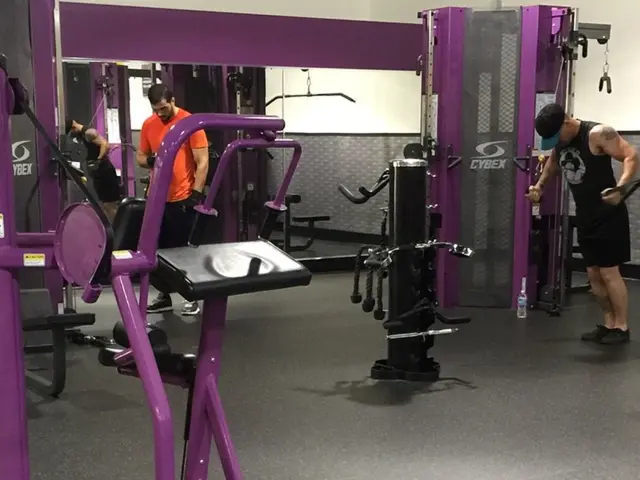Performance Boost: The Impact of Athletic Therapy on Athletic Ability
Athletic therapy: A valuable tool for athletes seeking to enhance performance and prevent injuries
For athletes seeking to elevate their game or recover from persistent injuries, athletic therapy could be an essential tool. Offering specialized healthcare centered around injury prevention, assessment, and rehabilitation, this approach has gained traction among professional and amateur athletes alike.
Understanding Athletic TherapyBefore delving into the benefits, it's crucial to clarify what athletic therapy entails. This healthcare discipline focuses on the prevention, evaluation, and treatment of musculoskeletal injuries, often working in collaboration with physicians.
Key Elements of Athletic Therapy1. Injury prevention: Certified athletic therapists are equipped to recognize and address potential risk factors for injuries, helping athletes minimize downtime and maintain peak performance.2. Assessment: Thorough evaluations are performed when injuries occur, enabling therapists to accurately diagnose the injury and devise a tailored treatment plan.3. Rehabilitation: Recovery initiatives involve a variety of techniques, including rehab exercises, manual therapies, and targeted treatment programs to help athletes recover and regain peak performance.
Boosting Performance through Athletic TherapyThe following section elucidates how athletic therapy can bolster an athlete's performance in various ways.
- Injury Prevention
- Identifying weaknesses: By identifying and rectifying imbalances or areas of instability, athletic therapists can prescribe targeted exercises to decrease injury risk.
- Optimal technique: With extensive knowledge of biomechanics, athletic therapists can help athletes refine their technique, maximizing efficiency while reducing strain on vulnerable areas.
- Faster Recovery
- Personalized treatment plans: Depending on each athlete's needs and objectives, customized rehabilitation programs are established to expedite recovery.
- Manual therapies: In addition to exercise-based rehabilitation, manual interventions such as massage or joint mobilizations may be used to speed healing and alleviate discomfort.
- Mental Resilience
- Confidence restoration: Dealing with injuries can affect an athlete's confidence; athletic therapists provide guidance and support throughout the recovery process, restoring trust in their bodies and enhancing their overall confidence.
- Mental well-being: Emphasizing both physical and mental recovery, athletic therapists may employ strategies like relaxation training and visualization to manage stress and aid in maintaining focus on their goals.
Incorporating Athletic Therapy into Your RoutineHere are some suggestions for incorporating athletic therapy into your training routine:1. Find a skilled athletic therapist: Seek out a certified athletic therapist experienced in working with athletes in your sport.2. Regularly schedule check-ups: Even without existing injuries, regular check-ups can help identify potential issues before they escalate.3. Adhere to your treatment plan: once assessed by an athletic therapist, faithfully complete their recommended exercises and self-care regimens.4. Communicate openly: Feel free to discuss any concerns or questions with your athletic therapist during your sessions.
In conclusion, athletic therapy is a valuable resource for athletes across various levels, offering various benefits such as injury prevention, faster recovery, and mental resilience. By integrating athletic therapy into your training routine, you can better prepare for the rigors of competition while ensuring you reach your athletic potential.
FAQs About Athletic TherapyQ: What types of injuries can athletic therapy help with?A: Athletic therapy is instrumental in addressing a broad range of musculoskeletal injuries, including sprains, strains, and post-surgical recovery.
Q: How long does it take to see results from athletic therapy?A: The timeline for seeing results from athletic therapy can vary depending on the severity of the injury and individual factors, with many athletes experiencing improvements in pain and function within a few sessions.
Q: Is athletic therapy only for professional athletes?A: No, athletic therapy benefits athletes of all levels, from occasional joggers to elite competitors.
Q: Is athletic therapy covered by insurance?A: In many cases, athletic therapy is covered by insurance plans. Additionally, coverage may differ depending on your provider and policy. Verify coverage options with your insurance company.
Q: How often should I see an athletic therapist?A: The frequency of visits to an athletic therapist depends on your individual needs and goals. Some athletes may require weekly sessions during intense training periods, while others may only need occasional check-ups or tune-ups.
Q: What should I expect during an athletic therapy session?A: During an athletic therapy session, you can anticipate a combination of hands-on techniques, exercise prescription, and instruction. Your therapist will evaluate your condition, develop a personalized treatment plan, and guide you through the recovery process step by step.
Q: How do I find a qualified athletic therapist?A: To locate a skilled athletic therapist, consult your local athletic therapy association or seek recommendations from other athletes or healthcare providers. Opt for a therapist who holds certification and boasts expertise in working with athletes in your sport.
Q: Can athletic therapy help with non-sports-related injuries?A: Yes, athletic therapy extends beyond sports-related injuries. Whether you have been injured in a car accident, at work, or during daily activities, athletic therapists can provide expert care to help you recover and regain function.
Athletic therapy, which emphasizes injury prevention, evaluation, and rehabilitation, can be a valuable addition to any athlete's health and wellness routine, especially when it comes to sports, fitness, and exercise. With use of specialized therapies and treatments, athletes can address potential risk factors for injuries, bolster their performance, and foster mental resilience. Integrating athletic therapy into one's training can provide a competitive edge while aiding in the overall maintenance of health and wellness.







